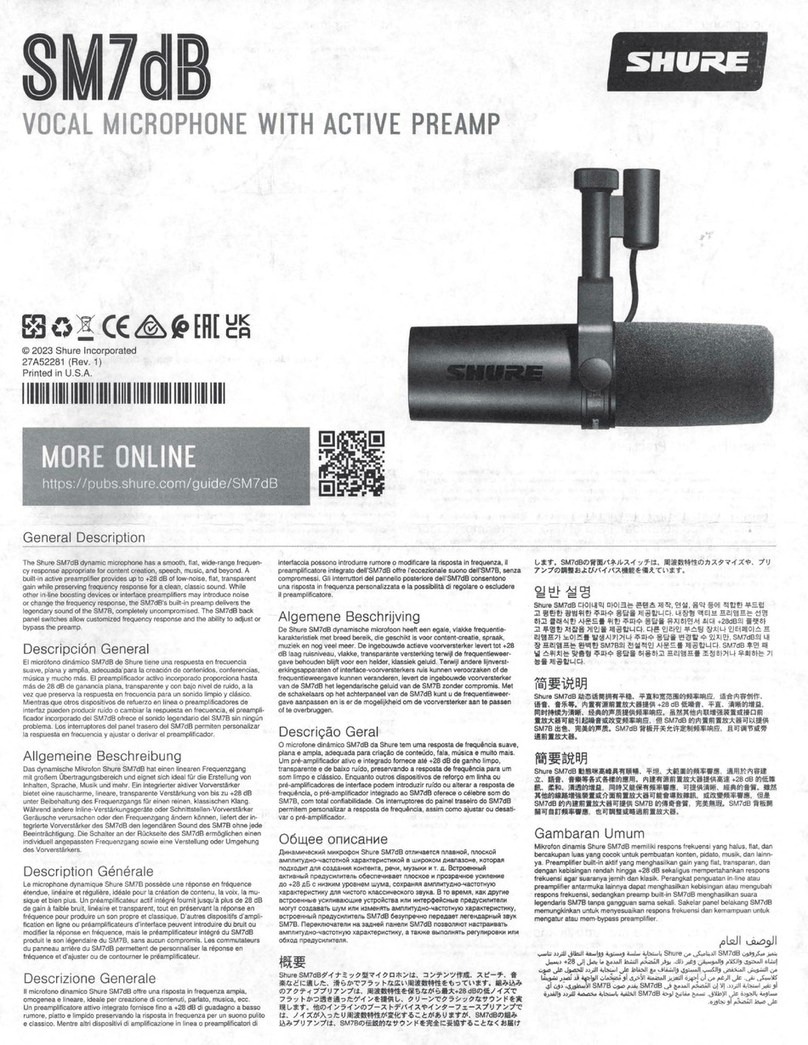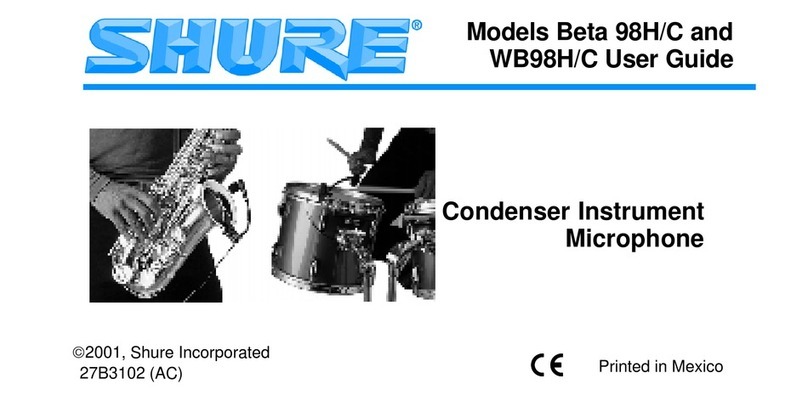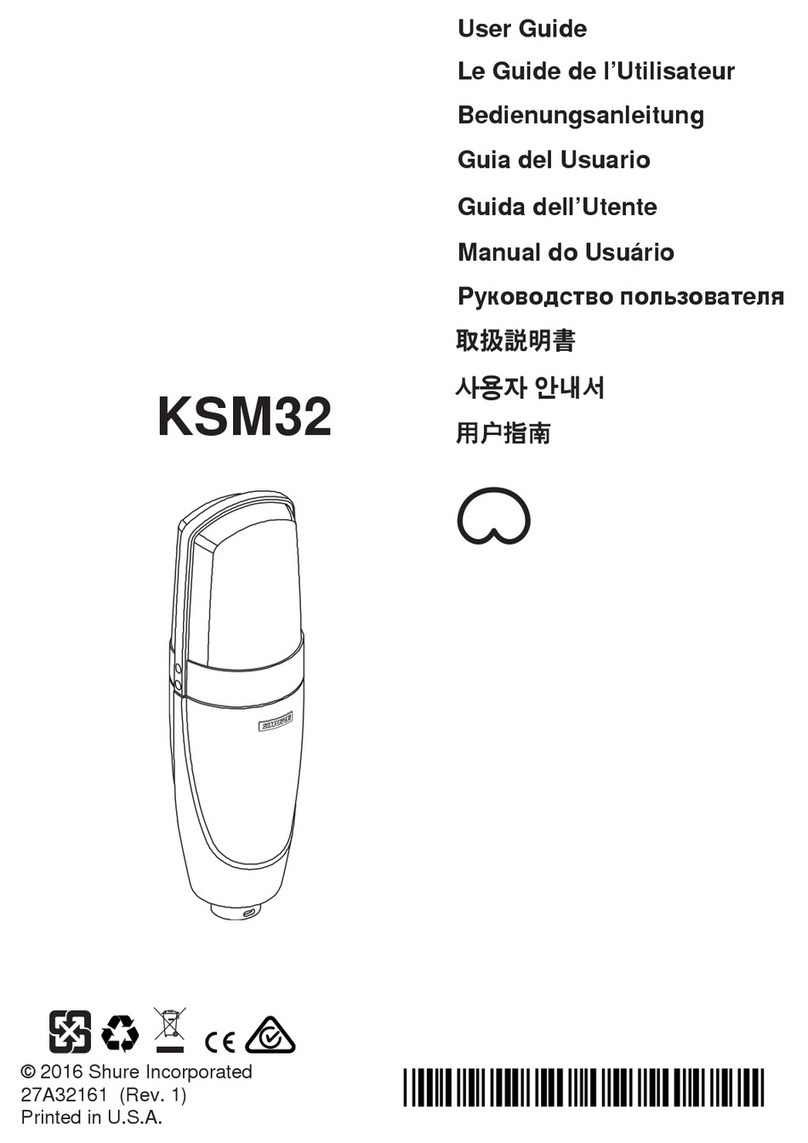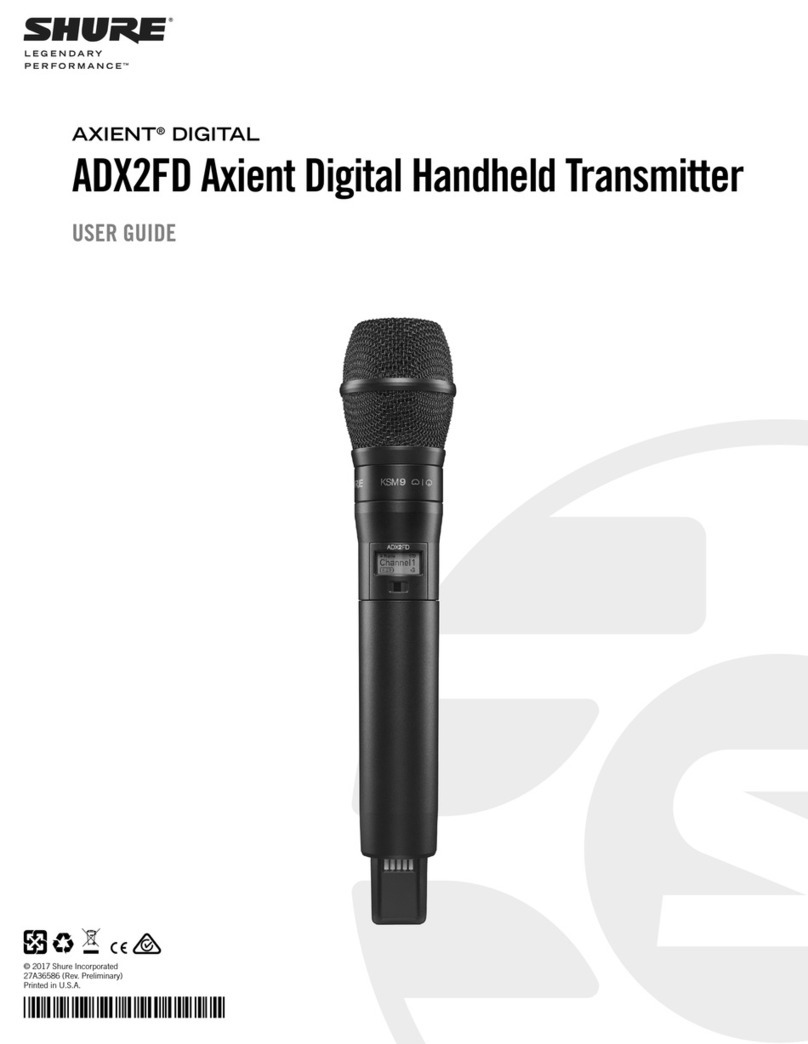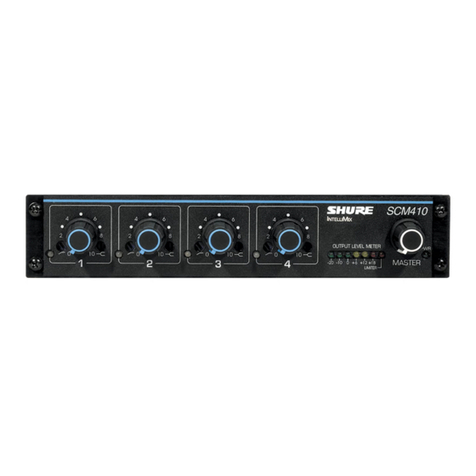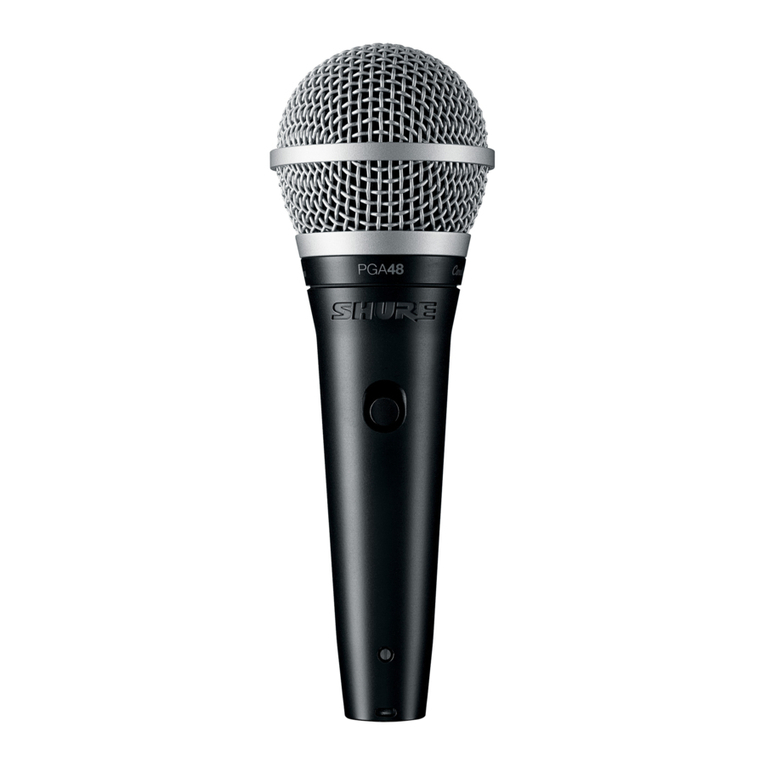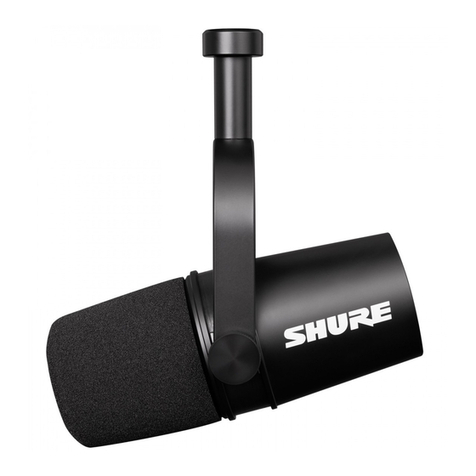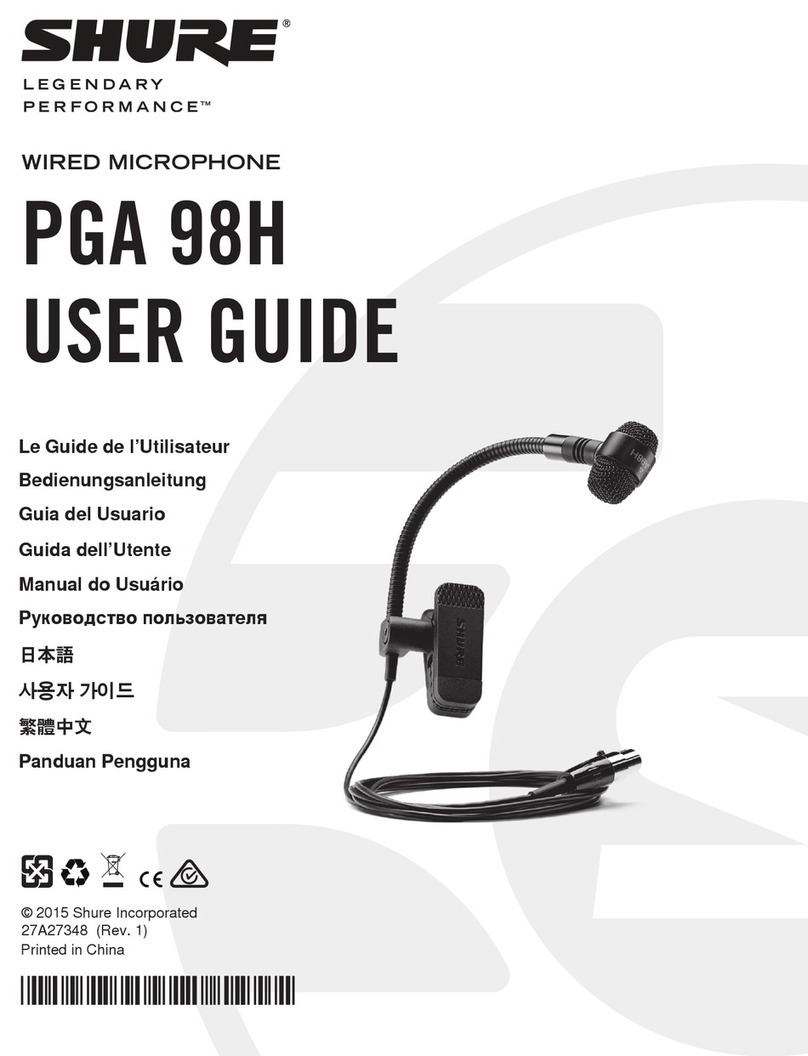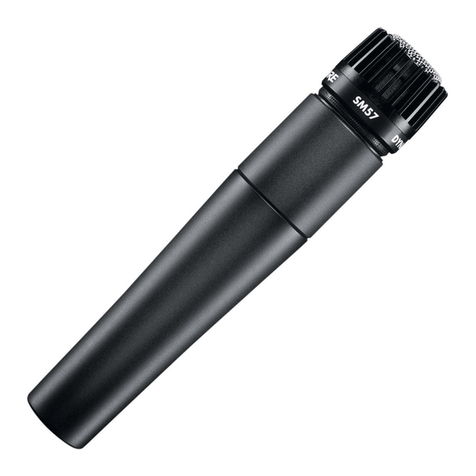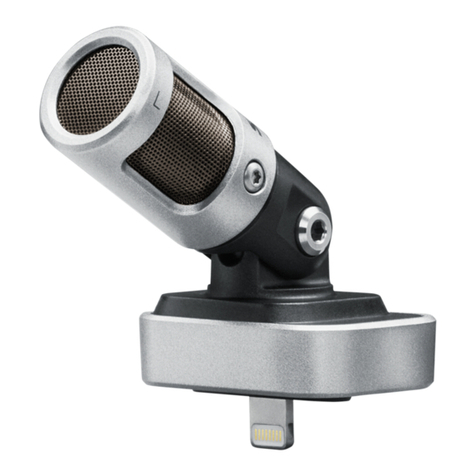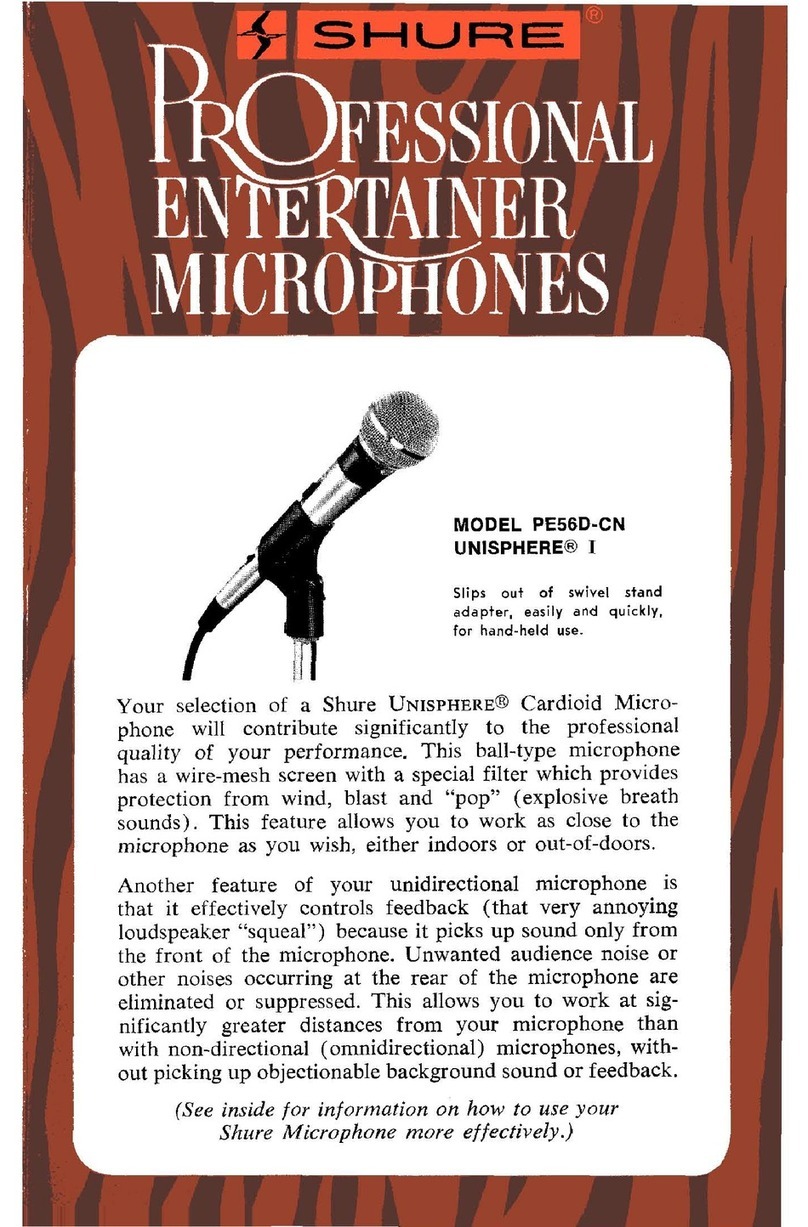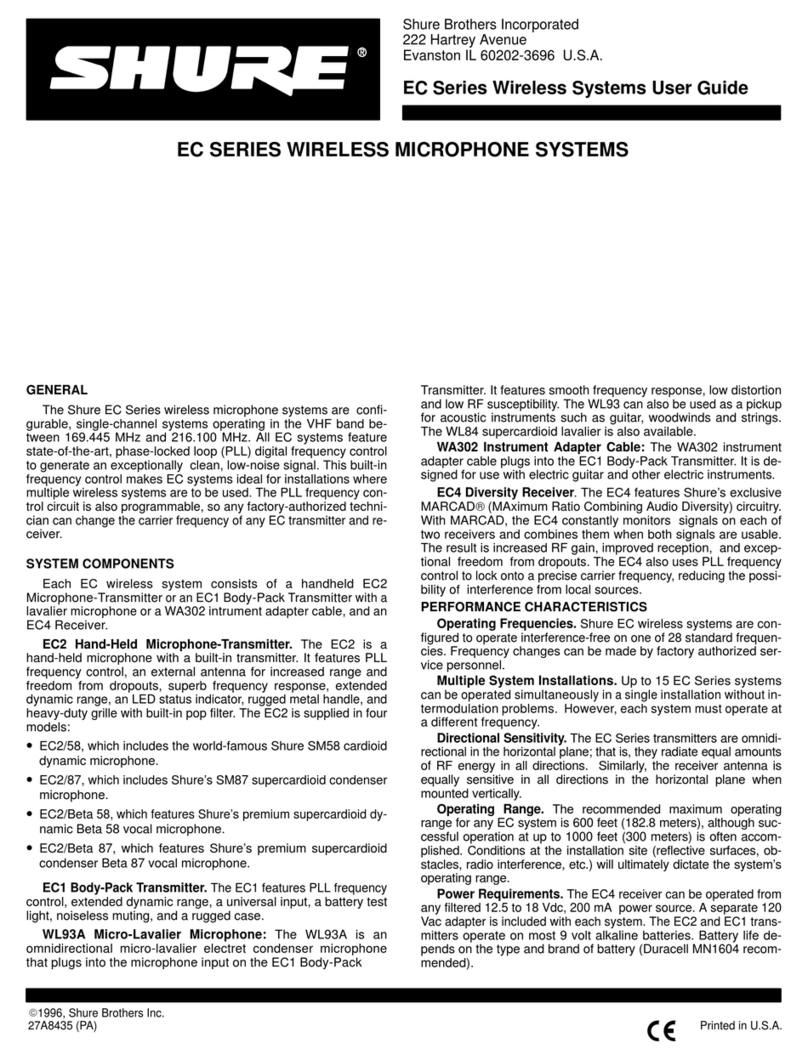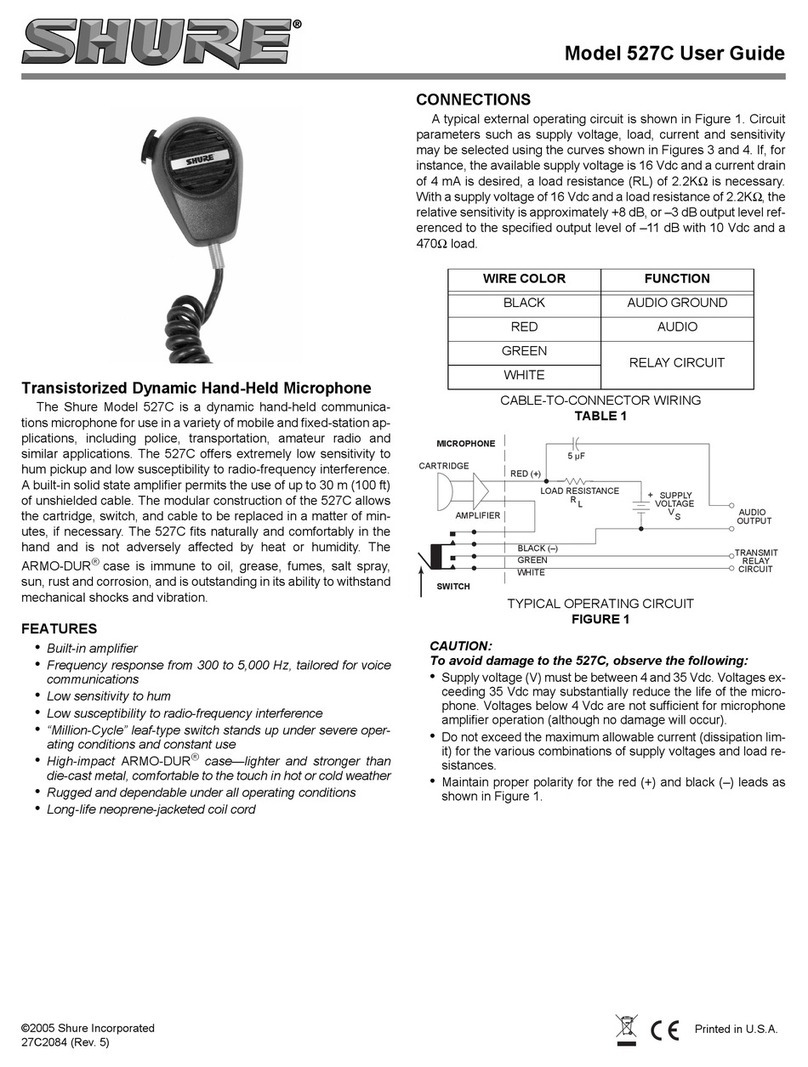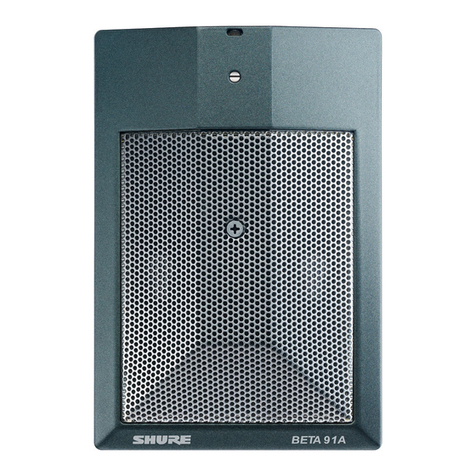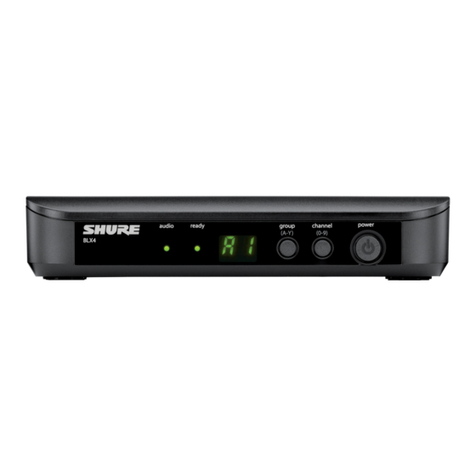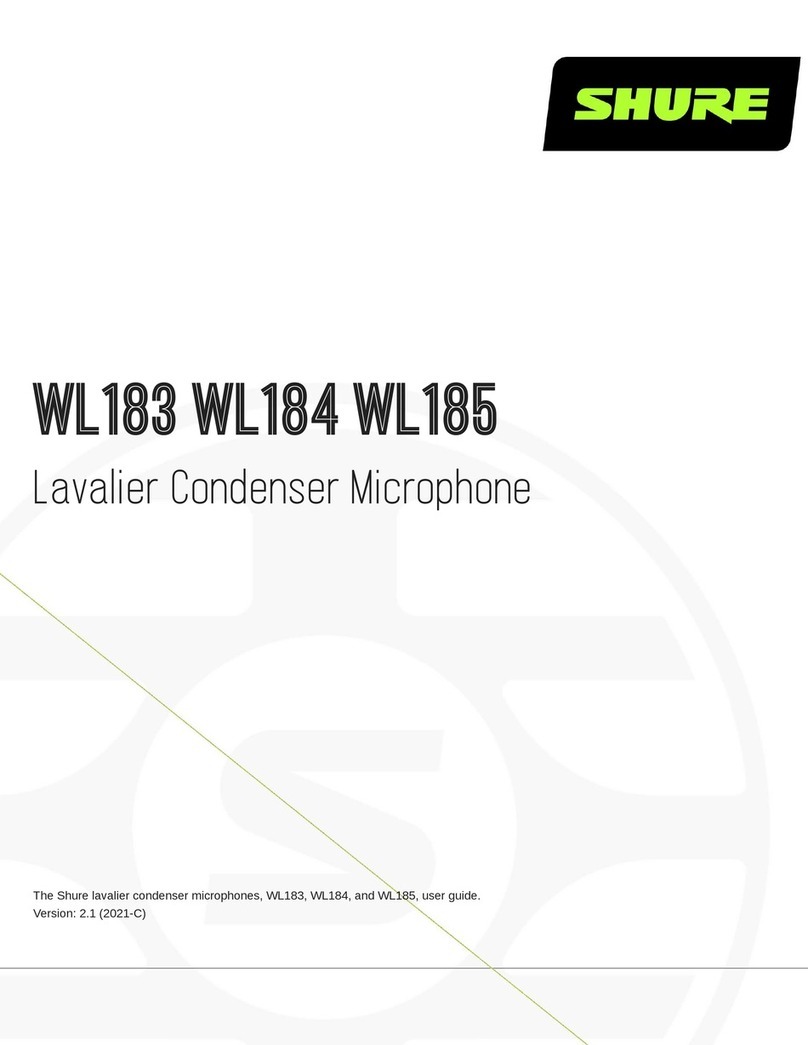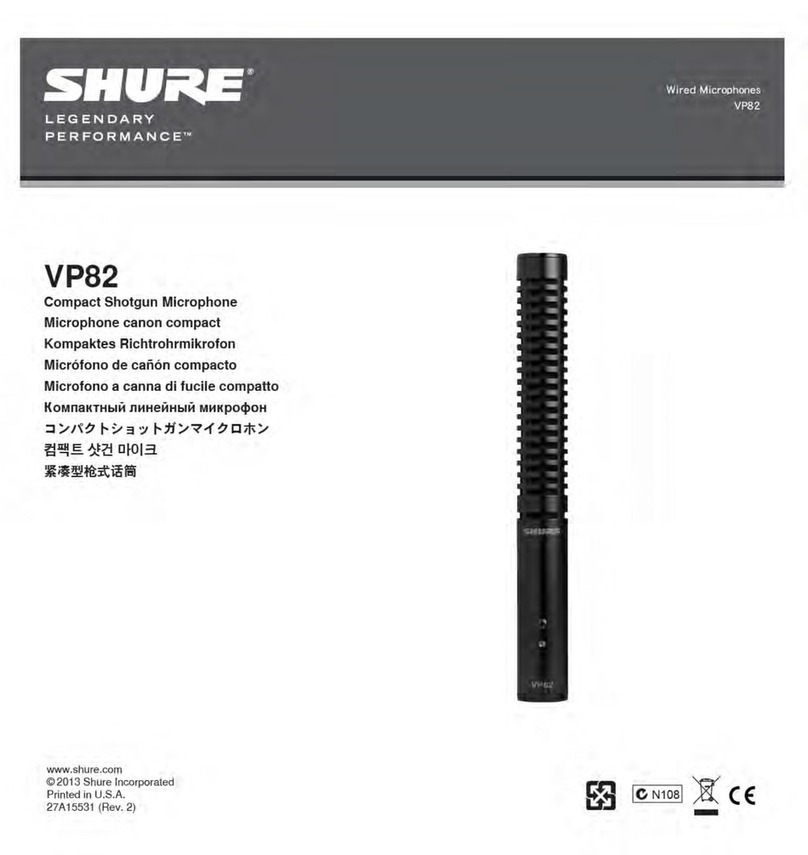English
3
APPLICATIONS
The KSM44 provides superior results in any application requiring a high quality
microphone. Some typical applications are listed below.
SVoice—solo, background, voice-over or broadcasting
SAcoustic instruments such as piano, guitar, drums, percussion, strings
SWind instruments—brass and woodwind
SLow-frequency instruments such as double bass, electric bass, kick drum
SOverhead miking—drums or percussion
SEnsembles—choral or orchestral
SRoom ambience pick-up—guitar amplifier or drums
Both the acoustic environment and microphone placement strongly affect the
sound obtained from miking a source, especially with a high-resolution microphone
like the KSM44. You may need to experiment with microphone placement, room
treatments and polar pattern to achieve the best overall sound for each application.
OPERATION
Mounting
Use either the ShureLocktswivel mount or the elastic shock mount to secure
the KSM44 to a floor or boom stand. When using the swivel mount, the internal
shock mount provides good isolation from vibration. For even greater reduction of
noise from external vibrations, use the elastic shock mount.
Important: When using the swivel mount or elastic shock mount, be sure that
the threaded, knurled locking grip is screwed securely onto the threads at the base
of the microphone. Do not overtighten.
Power
The KSM44 requires phantom power and performs optimally with a 48 Vdc
supply (IEC-268-15/DIN 45 596). However, it will operate with slightly decreased
headroom and sensitivity with supplies as low as 11 Vdc.
Positioning the Microphone
The front of the KSM44 is marked by the logo and the polar-pattern
selection switch. See Figure 1. Position this side of the microphone toward the
sound source to be recorded. The rear of the microphone is marked by the logo,
the low-frequency filter switch and the 15dB attenuation switch.
Selecting a Polar Pattern
The three position switch on the front of the KSM44 sets the polar response
pattern of the microphone. The sensitivity of the microphone to sounds coming
from different angles varies according to this switch’s setting.
